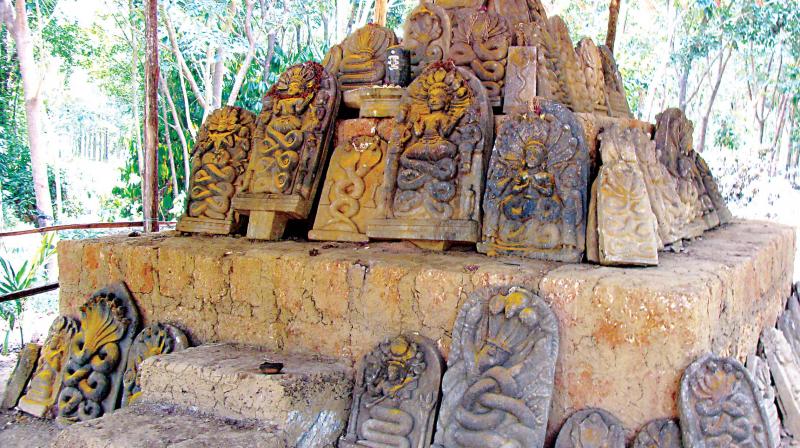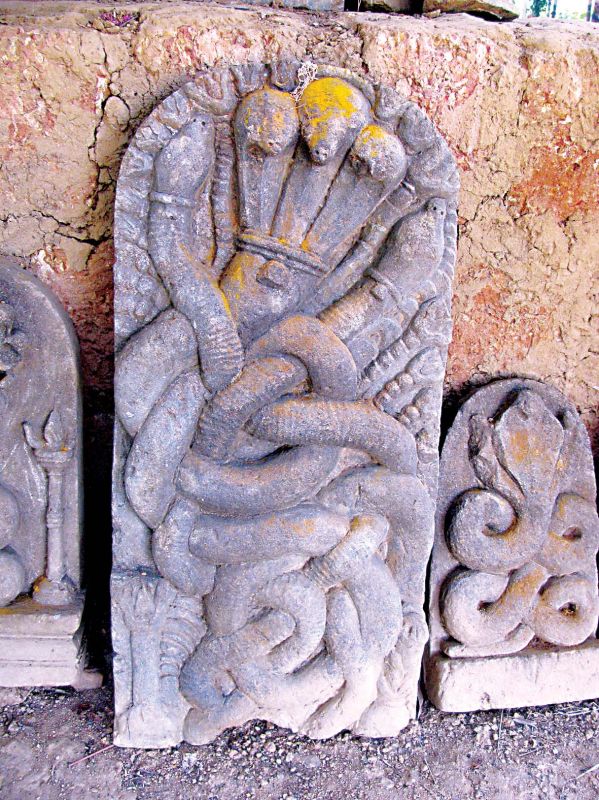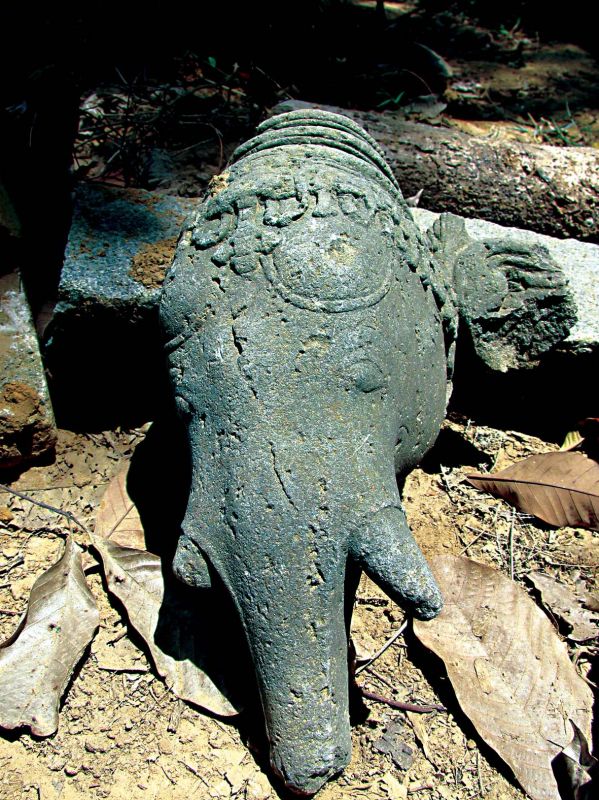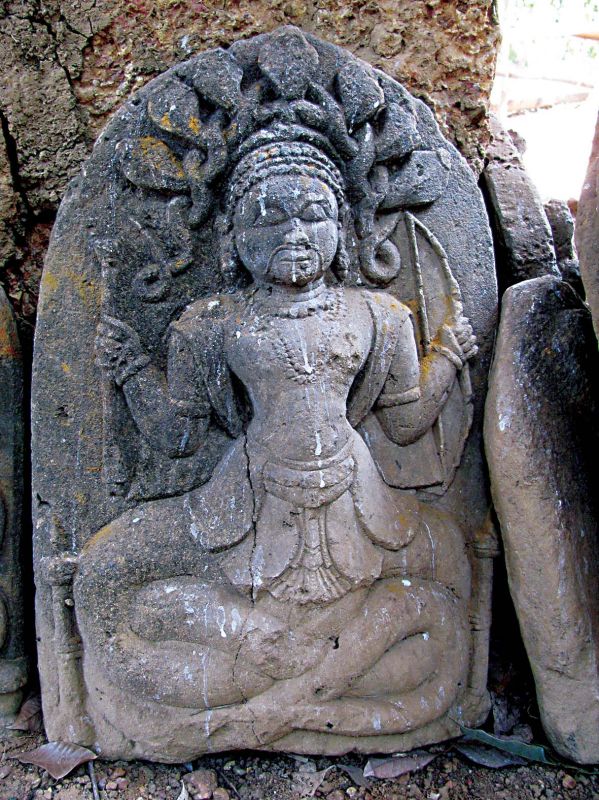HISS! When snake gods rise from the depths of Bangady

History is replete with tales of how snakes cast their magical spell on mankind, of how there was always a twist in the tale just because a serpent was lurking around. Would the fate of the Roman empire have taken a different turn if Cleopatra had not killed herself using an Egyptian serpent rather than fall into the clutches of Octavius? Who has not read of little Krishna defeating the dreaded multi-hooded serpent, Kaliya to keep the waters of the Yamuna sparkling and pristine as ever? And of Nagini in the famous Harry Potter series?
GURURAJ A. PANIYADI explores the mystery of the snake god, after the recent discovery of countless idols in Karnataka's coast
In Bangady and in nearby villages in the foothills of the Western Ghats, a ‘Naga revival’ is on after unique idols of the serpent god were excavated in a rubber plantation in Sahasra Nagabana, a hotspot for historians here. Several rare Naga stones have been unearthed, some a few inches in length and others about 3 feet tall!
Bangady is situated in Belthangady taluk, about 75 km from Mangaluru city and was once the capital of the Banga royal family which ruled parts of Dakshina Kannada district between the 12th and 17th century. The belief is that the land in the foothills of the Western Ghats was once under water and was a favourite spot for snakes which was later claimed by Lord Parasurama from the sea. He assured the snakes that even after humans inhabited the region, snakes which had lost their original home, would be protected and worshipped with devotion. This is how snake worship became an integral part of the life of people on the coast.

That people were fascinated by snakes from time immemorial is evident from the shape of the idols-some are carved like snakes, others have the serpent god in human form with long teeth. People agree that the place had an apt name- ‘Sahasra Nagabana,’ which means abode of the snake god with thousands of snakes! The digging work at Sahasra Nagabana started about five years ago and soon uncovered over 150 idols of Naga. The idols have now been arranged in a temporary place of worship and the construction of a new temple is underway which is expected to be completed in a year.

And how did the precious relics of history in Nagabana remain hidden till now? Wild growth had covered the place completely isolating it from the outside world till 2009 when some village elders while grazing their cattle, noticed structures of an ancient temple in ruins. On realising that someone was trying to encroach the land and set up a rubber plantation illegally, the villagers grouped and ensured this did not happen by forming a trust to renovate Nagabana.

An ‘Asta Mangala Prashna,’ - an astrological practice - was done to know the past of the temple and how to go about the renovation. “The astrologer said the place was known as Sahasra Nagabana as there were hundreds of idols here. He asked us to excavate deep and take out the idols. When we started digging, we were spellbound on seeing what we had found. The number of Naga stones was beyond our imagination - we got over 150 stones of which about 50 were damaged. The remaining were carefully kept in the temporary shrine (Baalalaya),” explains Sri Sahasra Naga Brahmalingeshwara Seva Trust member Ramananda Bangady.
The Asta Mangala Prashna also revealed that the place was famous for Naga worship and equalled the Kukke Subrahmanya shrine in stature. “It lost its glory over the years and we want to restore its place,” adds Ramananda. Historians agree on the antiquity of Nagabana and feel it might have enjoyed great patronage once. “Based on the carvings, I feel worship must have started around the 8th century. This place might have been patronised by the Jain kings from the 8th to 15th century,” Historian Prof. P.N. Narasimha Murthy told Deccan Chronicle. Most of the stones are of the ‘Naga Yaksha,’ mainly worshipped by the Jains then.
“A Ganesha idol and carved stones in the ruined temple too are pointers to their antiquity as the style dates back to an ancient age,” he says.
Mr Murthy notes some similarities between Sahasra Nagabana and the Sahasra Lingeshwara Temple at Uppinangady which is about 38 km from Bangady. Both were important under Banga rule. “The Shiva temple situated near the confluence of Netravathi and Kumaradhara at Uppinangady is called ‘Sahasra
Lingeshwara.’ At Bangady the ‘Sahasra Nagabana’ is situated at the confluence of two streams (Pichalar and Linganthyar) before the two streams meet the Netravathi. It indicates that this must have been a famous place of worship several centuries ago. The place could date back to a period even before the Banga royal family set up their capital at Bangady,” he adds.
Meticulous research could throw up a treasure trove of information on Nagabana and Bangady, say historians and more so if the focus is on why Naga worship became so popular in the region. Mr Murthy admits that he has not seen so many Naga stones at a single place in the region. “All the stones are unique which is why we need a proper study on Naga worship which is sure to throw more light on the history of the coastal belt,” he adds.
Revered and feared, a symbol of fertility, immortality and death too, the snake god maybe served as a spiritual wall of protection against the deepest anxieties of ancient society, the ferment and suffering and all that they dreaded. But how did hundreds of these idols come to be buried at a little village in Belthangady-was it because a troubled people felt this was the ideal worship to stave off evil and ill-luck? Unravelling the mystery behind the Bangady idols is a task that’s only just begun!

